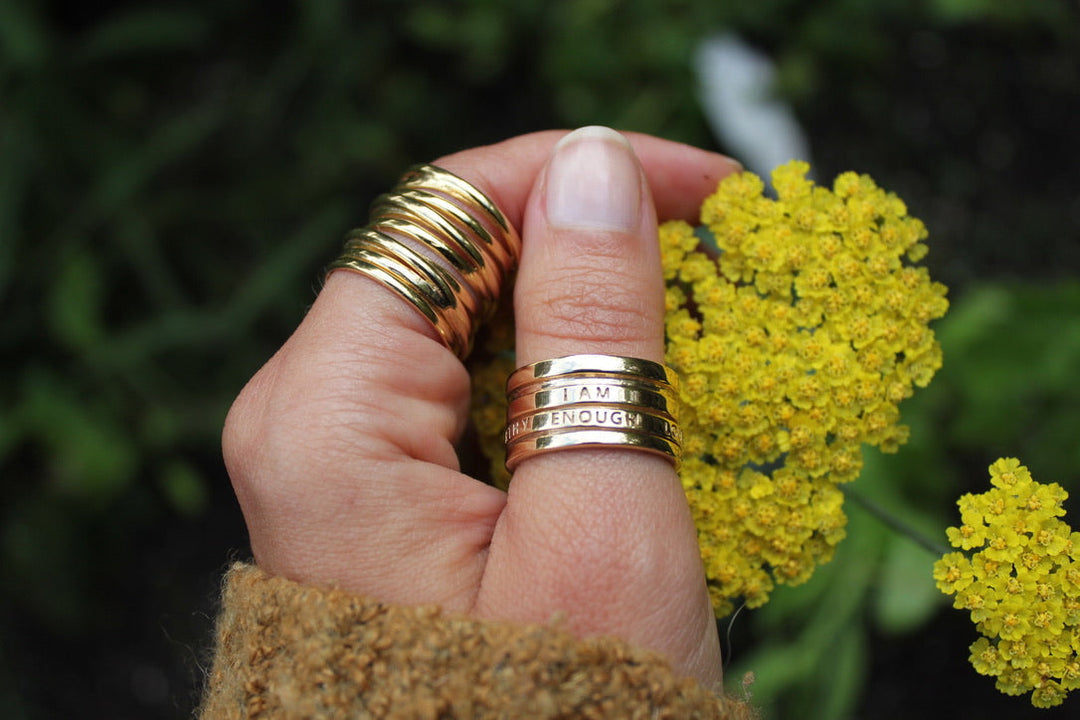What is the Mohs Scale of Hardness?
Have you ever wondered about the science behind your crystals and gemstones and what makes them a good choice for jewelry? The Mohs Scale of Hardness can answer a lot of your questions around the hardness, durability and authenticity of a stone.

The Mohs Scale of Hardness helps identify the hardness of minerals, including crystals and gemstones, and how resistant they are to being scratched. The scale was named after it’s inventor Friedrich Mohs who was a German geologist and mineralogist; he created the Mohs scale in 1812 to better understand minerals and their level of hardness. With the use of this scale we can also identify the authenticity of crystals and gemstones. Testing mineral hardness is a technique that has been around for decades, maybe even centuries, and Mohs scale makes the process more accessible to us curious minds!
According to the U.S. National Parks Services,
“the method of comparing hardness has been used as far back as 300 BC, as mentioned by Theophrastus in his treatis On Stones.”
This qualitative scale goes from 1 to 10 and works by scratching the surface of a mineral with another mineral to determine its overall hardness. The higher the number a mineral gets on the scale, the harder it is.
For this scale of 1-10, each number has been assigned a reference mineral with a pre-determined hardness. For example, number 1 on Mohs scale is assigned to Talc which has an absolute hardness of 1 meaning it is very soft. Number 10 on the scale belongs to diamond which has an absolute hardness of 1500 meaning it is very hard.
To determine the hardness of a mineral, we would use 1 of the 10 listed minerals to scratch our unidentified mineral. Geology.com put it best when they said,
“If you have a mineral specimen of unknown hardness, and reference mineral number 5 can scratch it, then the hardness of your specimen is less than or equal to a Mohs hardness of 5. Similarly, if your specimen cannot be scratched by reference mineral number 5, then its hardness is greater than or equal to a Mohs hardness of 5."
By doing this repeatedly with several of the minerals on the Mohs scale, you can better determine the hardness of your mineral. Alternatively, you can also use one of the identified objects (pictured) to scratch your mineral; this can help to narrow down the hardness of a mineral even more!
At Boho-Magic, we create timeless jewelry using .925 sterling silver and genuine gemstones, which are cut and polished mineral crystals. For our jewelry, we carefully and intentionally choose gems that are higher on the Mohs Scale because these crystals last the test of time! They are resistant to scratches and breaking which make them the perfect long-term addition to your collection.
Here are several of the gems we use at Boho-Magic and their hardness numbers:
Aquamarine (7.5-8)
Black Tourmaline (7.5)
Turquoise (5-6)
Larimar (4.5-5)
Moonstone (6-6.5)
Labradorite (6-6.5)
Rose Quartz (7)
As well, the Mohs Scale can potentially indicate if a mineral is water-durable! The higher the number, the more water resistant the mineral is. So understanding the hardness of a crystal or gemstone can help you determine if its safe to put in water! Anything above a 4.5-5 is safe to be submerged in water for short periods of time (though we recommend keeping your silvers out of water!).
We love to create intentional pieces made from materials that can last a lifetime so that you can be more sustainable and thoughtful with the jewelry you choose to purchase. Now that you know the science behind crystals and gemstones, we hope this helps you make a more informed purchase at Boho-Magic!








Leave a comment